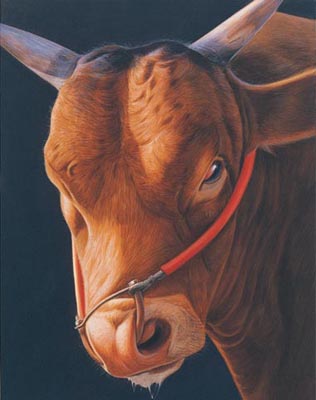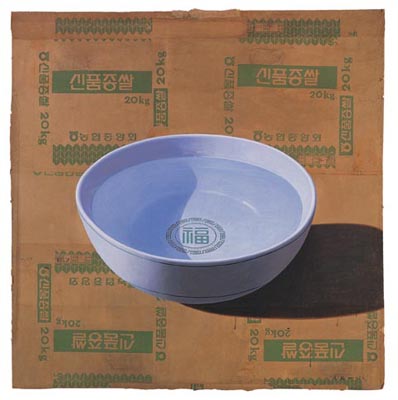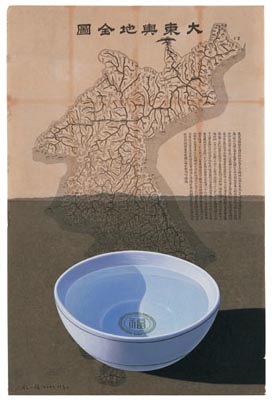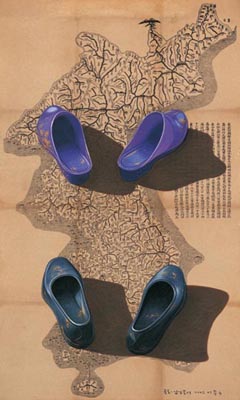国土
The Earth Artist Lee Jong-gu has persistently executed the figure of peasants of our age since the middle of 1980s. The name Lee Jong-gu even been equated with ‘the artist who renders the life of peasants on grain sack’. We can feel the artist’s objective and amorous gaze toward the life of peasants by the meticulous and accurate paintings onthe peasants’ life and objects rendered on his peculiar material like papers from grain sacks. Lee Jong-gu presented, in his 2003 exhibition, the works from his enlarged concern of time and spacefrom the limited subject of farming village to our wholesome earth and the life of man. Field investigation traversing from Apnokgang to Dumangang via China. That’s a grand journey starting from treading our old territory of Goguryeo and Balhae to the East Sea along the North end of Korean peninsula. During the journey, he felt afresh the beauty of the earth and the lengthiness of history, and desired to capture the impression in grand landscapes. He desired to execute not an ordinary landscape but a kind of ‘history landscape’ which encompasses the overall life and nature of the earth. The result of that is and series which were come forth after three years’ preparation. In the great and series, Apnokgang and Dumangang flow magnificently in the left and right side of the canvas from the top of Baekdusan, and the mountainscapes of Deogyusan and Jirisan fully fill the scenery. These paintings, an iconographical epitome of the nature of Korean peninsula, could be said to be a materialization of his love for the earth based on his own experience and footwork. This series of work, putting together physical geography and human geography like the nature, human, culture and ecology, will continue as connecting every ridge of mountains in South Korea













